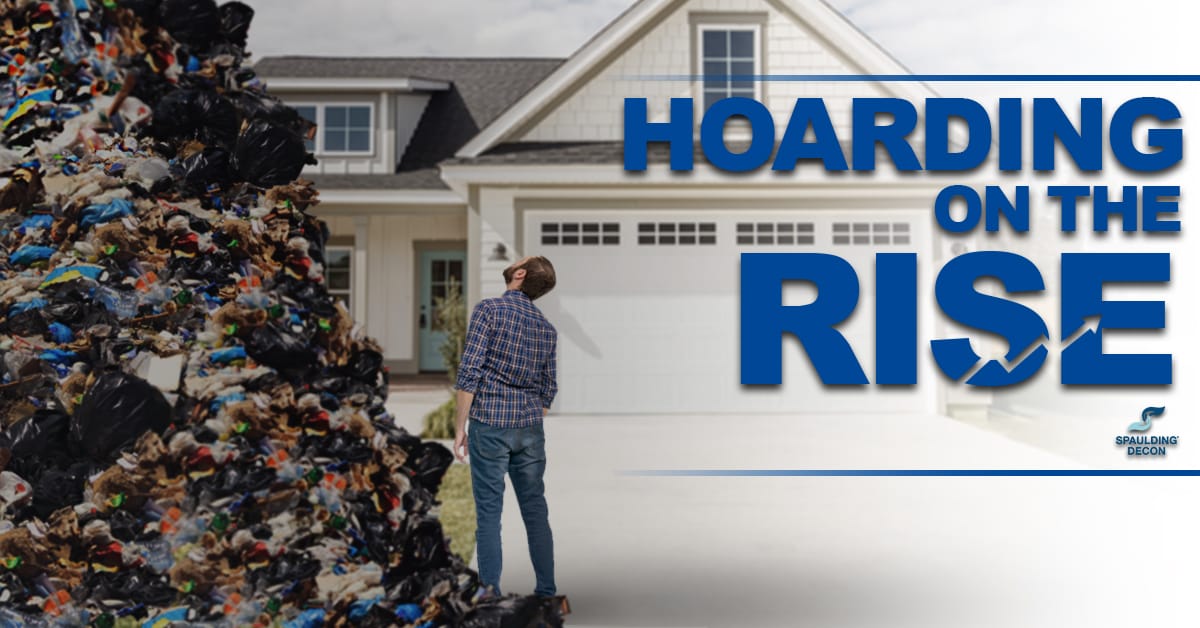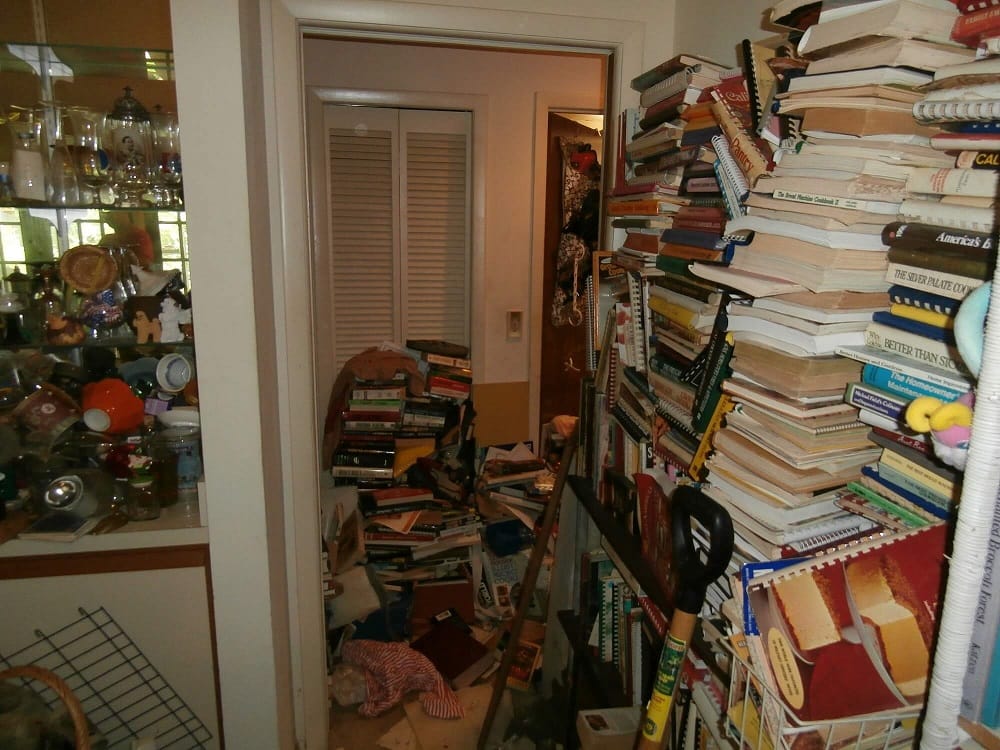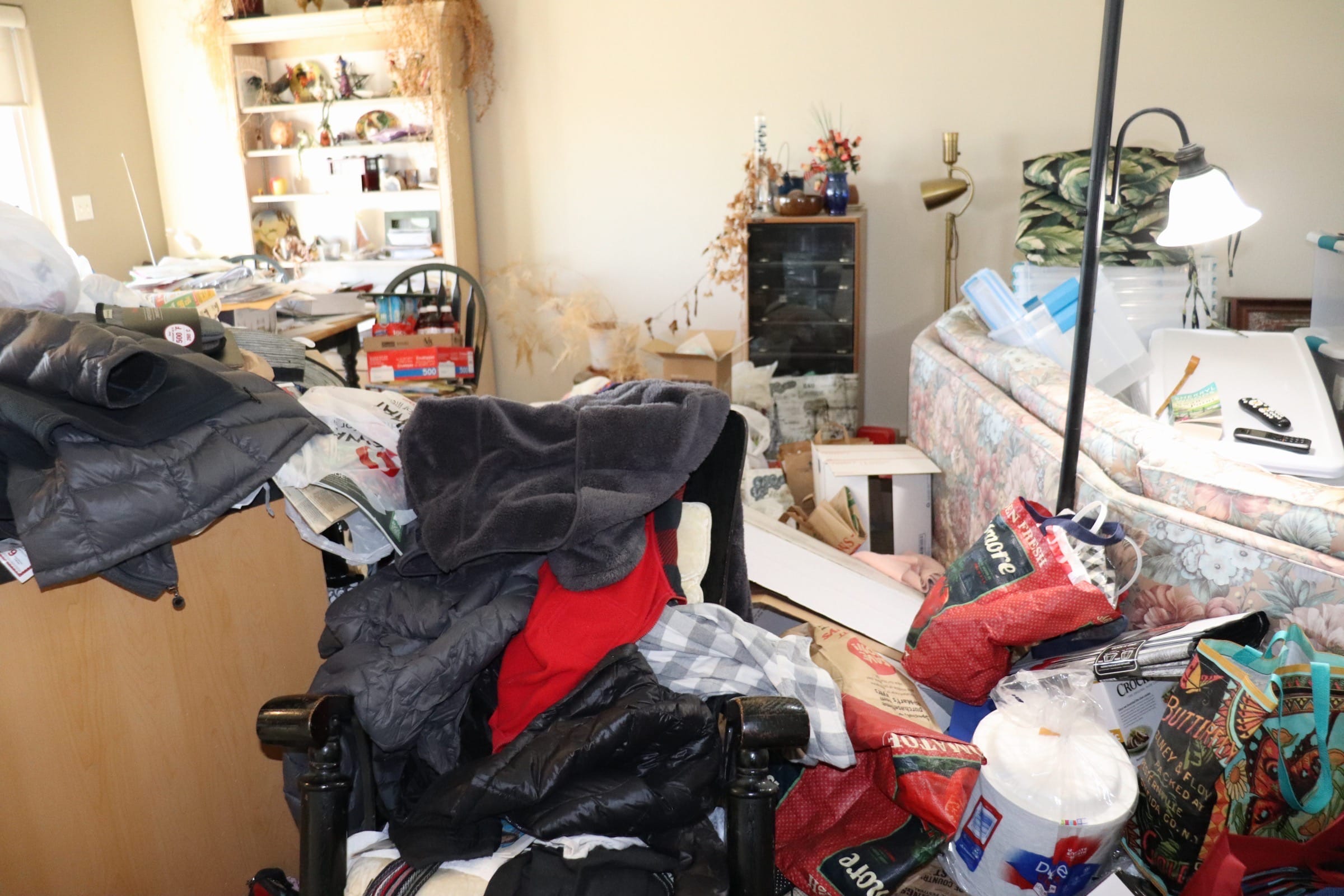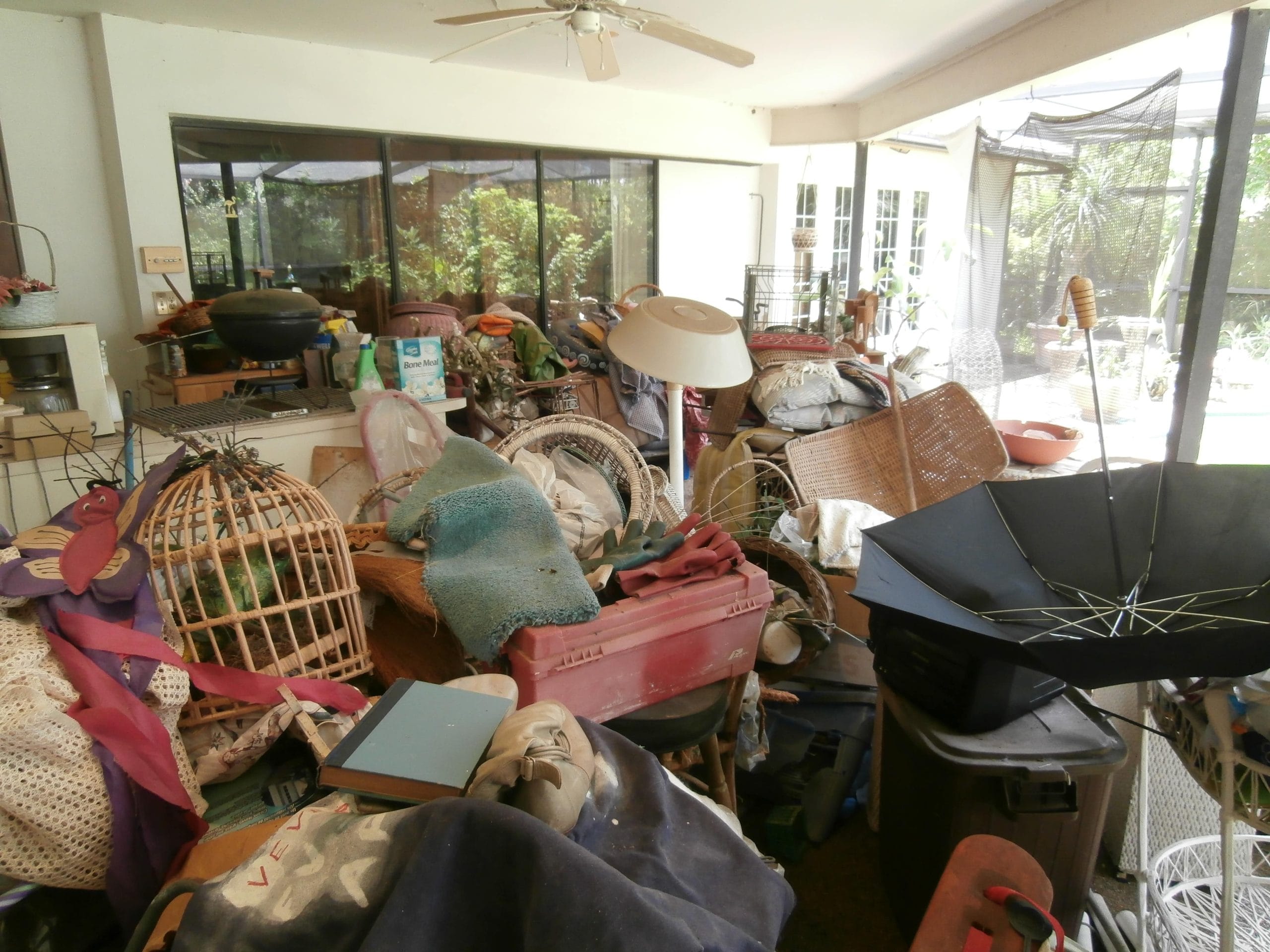Why Is Hoarding Becoming More Prevalent?
Hoarding is a severe problem for a large amount of people around the world. It tends to be first-world nations like the United States that have greater incidences of hoarding. This is likely because people here have acquired disposable income. The more you learn about hoarding, the more you realize that you do not have to have disposable income to become a hoarder. People often collect free and found items as part of their hoard. Over the past 50 years, the number of people who are hoarding has increased exponentially. Though more information has come out about this disorder, individuals still get stuck in the trap of hoarding. For some, it is past trauma that causes them to hoard. For others, it is more recent troubles that cause the shift in their mind and make them feel that they need to hoard.
What Makes People So Fascinated with Hoarding?
People like to learn about hoarding. They like to hear stories about hoarders who have homes so thick with newspapers and old albums that you need a flashlight to navigate the maze. Lots of people who watch those reality shows about hoarding are happy they are not hoarders.or at least that is what they tell themselves. There is some twisted comfort in knowing that there are people who are worse off in their hoarding addiction. Today, about everyone has far more stuff than they need. How many pairs of shoes are needed? How many pieces of clothing? How many of those little collectibles that you love are really needed? Around 10% of all people in the United States rent at least one storage space for their overflow of items. It does not mean they are suffering from a disorder, of course. However, most people simply feel better about themselves when the items are stored away, and they feel they have it better than others. Comparison is human nature. It is quite likely that this fascination with hoarding, and the secret fear that a lot of us might have about becoming hoarders, has also led to the rise of shows, books, and articles about organizing and downsizing.
Our Understanding of Hoarding Has Changed
Hoarding used to be about gold, water, food, and other items that were valuable to entire groups of people. Kings and churches would hoard gold, for example. It was only in the last hundred or so years that hoarding as we now know it started to develop. Today, people accumulate items that may not have much value at all. Often, only the hoarders see the value in the items they accumulate.
When this condition was first researched, it gained the name Collyers Syndrome, named after the Collyer brothers, Homer and Langley, who were hoarders of the first order. They had a mansion in Harlem and filled it over the decades with massive amounts of junk until they ended up dying in 1947 amongst their hoard of newspapers and other items. With increased access to cheap products, people started buying and accumulating more. Unfortunately, some of those people had trouble stopping.
They did not need just one tin toy; they needed all the tin toys they could find. They did not just read a newspaper and get rid of it. They needed to keep the newspaper forever. Hoarding grew, but it was still not something that people talked about very often. It was looked down upon and stigmatized. It was in the 1990s that hoarding became classified as an obsessive-compulsive disorder by researchers.
It stayed under this classification until 2013 when it was given its own classification as hoarding disorder in the DSM-5. Our understanding of hoarding has changed, but it has not slowed down the number of people who are suffering from the disorder.
The Hidden Condition: It Could Be Worse than We Realize
Hoarders might love their collection, but most also feel shame. They know that what they are doing is not what others would consider normal. They might even know, deep down, that they need help. They know they must get rid of all their excess belongings and clean their home properly. Sadly, they lack the mental capacity and motivation to do so. Hoarders tend to keep their disorder as hidden as possible. They hide the issue from family and friends for as long as they can.
They may even stop inviting people to their homes when their accumulated stuff starts to take over living spaces. The hoarders certainly do not talk about it with anyone, and they often convince themselves that what they are doing is fine. They tell themselves that they are just holding onto things for when they need them or because of sentimental value.
It is estimated that between 2% and 6% of people in the United States alone suffer from hoarding disorder. In the UK, it is estimated to be 5% of the population. However, experts believe that the true number of hoarders in the UK and other countries is much higher. Many hoards go unreported. Since hoarding is still considered a taboo topic to discuss, many family members might not realize that their loved one is a hoarder. The numbers continue to rise.
A Larger Elderly Population
Today, we have a larger elderly population than we did in the past. It is even much larger than it was just 20 or 30 years ago, and this ties in with the increase in hoarding that we have seen. Compulsive hoarding in older adults is more common than it is with younger groups of people. That is not to say it does not happen with younger peopleit doesbut it tends to happen more often with those who are fifty-five and older.
Research from the Johns Hopkins University School of Medicine found that the prevalence of hoarding behavior is about 4% overall. However, it is in 6.2% of people who are ages fifty-five and above. So, why does hoarding tend to get worse with age? It is due to multiple factors. Older people tend to have fewer social interactions with people in the outside world. They are confined to their homes more frequently.
If they have a spouse, that is typically the only person they talk with regularly. This can leave seniors feeling lonely and as if they are separate from the rest of the world. They look for things that can help them to better cope with their feelings of isolation and depression. In most cases, this means collecting more things for the house or apartment. It could be anything from clothing to food to trinkets, and even animals for companionship.
University of California, San Francisco researchers found that 13% of seniors who had late-life depression were also hoarders. Depression and hoarding go hand-in-hand, at least in later life. Those who have hoarding disorder will often experience other disorders, too, besides depression. This could include anxiety, ADHD, alcoholism, and other mental health illnesses. It can also include OCD which is one of the reasons why hoarding was placed into that category before becoming its own disorder. Hoarding always has the potential to be dangerousmentally, emotionally, and physically.
However, it tends to be more dangerous with elderly patients. Hoarding creates problems with getting around the house safely, and most elderly people already have mobility issues. There is an increased risk of falling and injury in a hoarded home. The air quality in the home could be at risk, as well. 80-year-old Sally Honeycheck lived in a run-down area of Detroit for decades. Her family and friends had no idea she was a hoarder. She did not have people over, but she always presented herself well when she would go to church and other places to see friends and family.
When she stopped answering her phone, her cousin, Linda Kajma, became concerned. On Thanksgiving weekend, Linda went over to Sallys house and let herself inside. She was stunned at what she found. Sally had been living not just in squalor, but in a labyrinth of garbage with her dog. It was like living in a layer of hell. Sitting at the table, nothing more than a skeleton in a red sweater, was Lindas cousin.
She did not believe what she was seeing was real. There were large piles of clutter, trash, feces, mold, and fungus. There were also rats and her recently deceased rottweiler. It was determined that after her death, Sallys dog and rats ate her body. When the dog no longer had access to food or water, it died. The rats, however, continued to make the home their own.
This is no way for anyone to die, but there are always stories like this that crop up in the news. Oftentimes, no one really knows just how awful it has gotten inside of a hoarder home until it is too late to help.
Most people do not even realize that their own loved ones are needing help.
Abnormal Times: The Pandemic and Hoarding
One of the other major reasons that we have seen an increase in hoarding over the past couple of years is fear. The pandemic hit people from out of nowhere, and it caused a lot of people to change the way they thought about their disposable lifestyle. Some individuals started to become a bit tighter with their money and focused on buying just the essentials to make it through.
Others, however, panicked and started to buy as much as they could. They hoarded food, toilet paper, and whatever else they could buy. The pandemic causedand continues to causeincreased isolation and depression in individuals These psychological changes happened quickly, and most people were not prepared. Increased people have started to hoard, even as the pandemic slowed in 2021.
These individuals did not want to be caught unprepared again. Some went from panic buying to outright hoarding. The pandemic has played a role in the increased number of people who have developed a hoarding disorder. The trauma from the pandemic is not only causing older individuals to buy and hoard. It is affecting everyone including young adults, too. The types of items that hoarders acquire can be different from the usual knickknacks, magazines and newspapers that have been seen in the past.
Hoarders of today and tomorrow may end up having mountains of toilet paper, excess canned food, and excess toiletries, yet they may not even realize that they are hoarding. In their minds, they are simply preparing for the next fallout. Individuals who were hoarding prior the pandemic were hit just as bad, even worse. They saw more justification for their behaviors, and they continued accumulating.
Those who were seeking therapy sessions to help with their hoarding suddenly did not have easy access to their therapists. In-person sessions were canceled due of lockdowns. Most hoarders do not have easy access to computers and the Internet (often because they are elderly), and this means that they no longer have assistance to deal with their disorder. It is still too early to tell exactly how much of an impact COVID-19 will have on hoarding overall.
However, the signs seem to point that it is going to be worse than before. There will be new generations of hoarders who point to the pandemic as to why they do what they do.
Getting Help with Hoarding Disorder
Hoarding is a major problem that will not go away on its own. People who suffer from hoarding disorder need help from qualified mental health professionals so they can overcome the mental struggles that are causing them to hoard in the first place. Additionally, they will need help when it comes time to remove all those items from their home and to have the space cleaned out properly.
The road to recovery is neither short nor easy, but it is possible with the right type of help.
Resources:





